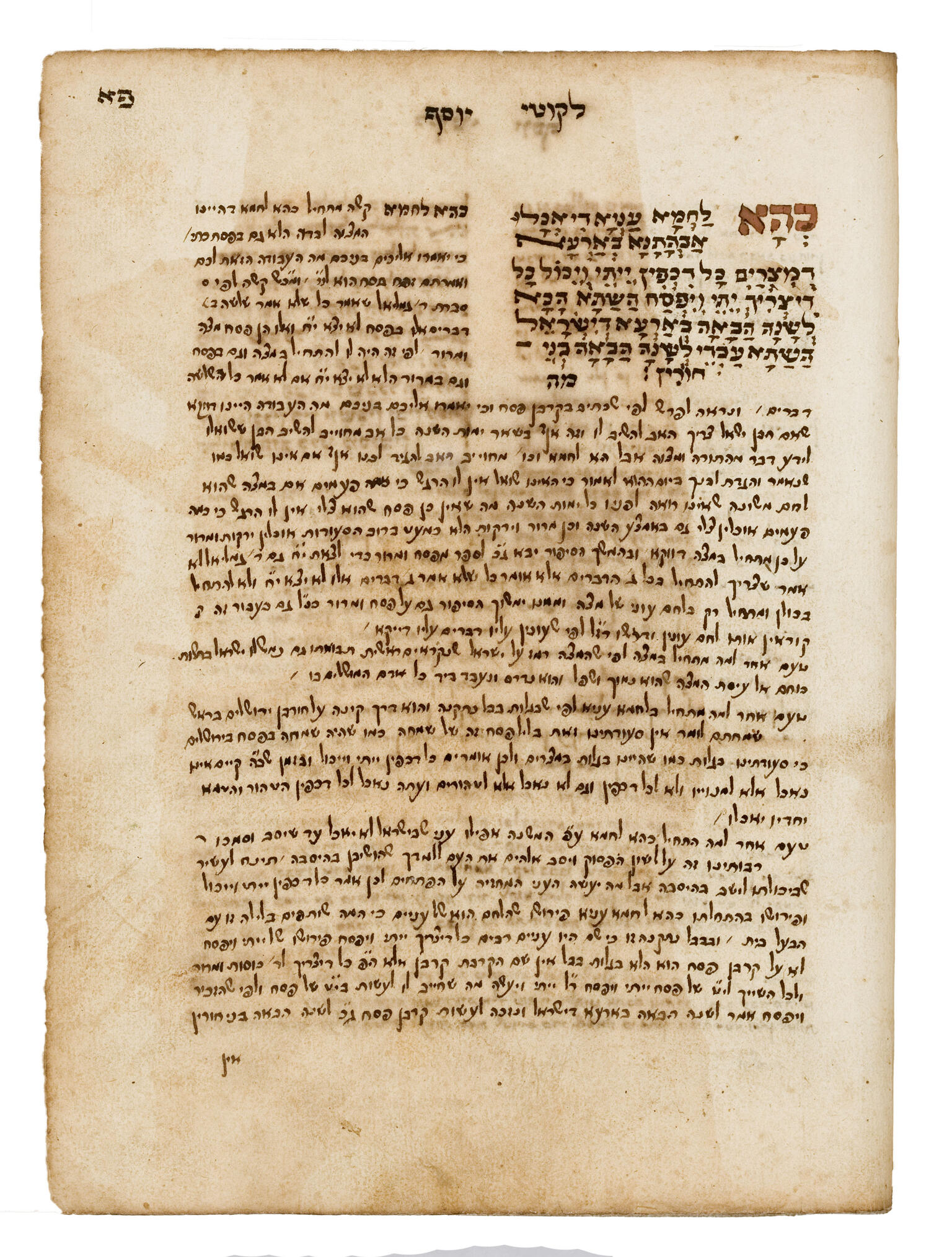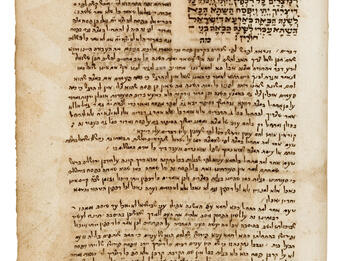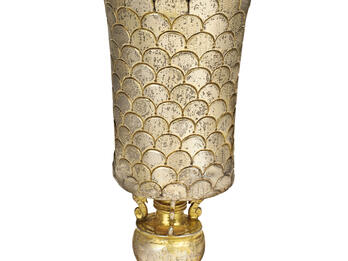Minhage de-kehilah ha-kedoshah Vormaiza (Customs of the Holy Community of Worms): On Purim
Purim Customs
At the beginning of Purim, after evening prayer near the time when it gets dark, the charity warden brings with him an assortment of candles that are painted and nice looking, and he places them on the dais in front of the reader of the Megilah [scroll of Esther]. And the beadle brings with him the Megilah, and he brings it to the monthly parnas [community leader], who tells the beadle to bring it to so-and-so for the latter to read the scroll. The cantor does not come up until the beadle calls him in the name of the parnas; and then he comes up on the dais. And in any case, the custom is to notify him concerning the reading of the scroll three or four days in advance, so that he can practice the reading. Nevertheless, the community leader repeats the call and gives him honor at the time of the reading, as has been mentioned above. And it is customary to honor one person at night and another during the day; and also during the day, the parnas calls upon the person as an honor, just as he had done for the one who had read the night before.
The beadle carries the Megilah and flattens it out into a readable scroll. And the rabbi and some other rabbis stand next to the reader and read with him from the community scroll. And at the time of the reading, some of the community leaders and elders sit around the dais, and there they read the Megilah from copies that they hold in their hands. The cantor begins with three blessings—on the reading of the scroll, blessing God for performing miracles [she-‘asah nisim], and the she-heḥiyanu [for reaching this occasion]—in a special melody specific to the Megilah. And the cantor reads the Megilah in every place according to the custom of that place.
And when he comes to the verse there was a certain Jew (Esther 2:5), and the verse And Mordechai went out (Esther 8:15), and to the verse The Jews had light (Esther 8:16), and to the final verse, [he reads in a different manner]. With all of these verses, the cantor reads the first word of each verse and then remains silent while the entire community says that verse in a loud voice. Afterwards, the cantor repeats the verse in a loud voice, but begins from the second word of the verse, as there is where he left off. During the day he reads the entire Megilah and does not remain silent at any point, and the community does not recite the verses except for the last verse [and the aforementioned three]. The community says the verse For Mordechai (Esther 10:3), after which the cantor recites it in the same melody as the night before, and that is it. And it is a custom to say the verse concerning the ten sons of Haman in one breath. And they are not to make a commotion over the name of Haman during the entire Megilah [reading] except when it is said And the Jews struck all of their enemies (Esther 9:5) until the end of the verse the ten sons of Haman (Esther 9:10). At that point, everyone strikes out his name, and that is it. And the custom is for the cantor to sing the last verse of the Megilah with a beautiful melody.
During the time of the reading of the Megilah, everyone is in the synagogue—men, women, and children—just like at the time of the blowing of the shofar. And women who have recently given birth, and sick people, and those who are not at the synagogue at the time of the Megilah reading should read the Megilah by themselves, or someone else should read it to him or her at his or her house, so that he or she may fulfill the commandment of reading the Megilah.
And immediately before the beginning of the reading of the Megilah, both at night and during the day, young girls go and wander around, as do young men and adolescents. They change their clothes, donning masks on their faces and wearing costumes. They wander around the men’s and women’s sections of the synagogue [lit. “men’s and women’s synagogue”], and at night they carry torches, but in the day they do not carry torches. And each of the young women goes dressed in holiday clothing or bridal clothing, with a crown of flowers or a woven accessory upon her head, and each is called the Queen, in the name of Queen Esther. Thus they wander around the dais the first time, and then they go out and wander around the women’s section, and then they return a second time and wander around the dais like the first time, and go out and wander around the women’s section like the first time. They do this a third time, but they do not do this more than three times.
It is the custom for women to wear holiday clothes both at night and during the day, whereas the men wear regular clothing during the day, like the clothing that they would wear on a regular weekday.
At the end of the Megilah reading, the beadle rolls up the scroll from its end to its beginning, and afterwards, the cantor begins the prayer Asher heni [“He who deterred”], but he does not start until the beadle has rolled up the entire scroll. He begins the prayer Shoshanat Ya‘akov [“The rose of Jacob”] in a loud voice, and pronounces, “Accursed Haman, blessed Mordechai, and also her destruction is a remembrance for the good.” And also And You are Holy, etc. (Psalm 2). And on Saturday evening he says the Full Kaddish before the reading of the Megilah, and after the Megilah reading he says Va-yehi no‘am [“May He be pleasant”], and You are Holy, and may He give you. And the Havdalah prayers that distinguish between the Sabbath and the weekdays are said, just as they are said every Saturday evening. Then people go to their houses, and they eat and rejoice, and during the blessing over the meal they say the ‘al ha-nisim [“For the miracles”] and Bi-yeme Mordekhai [“In the days of Mordechai”] prayers.
Credits
Yuspa Shamash, “Minhage de-kehilah ha-kedoshah Vormaiza (Customs of the Holy Community of Worms): On Purim” (Worms, 17th century). Published as: Jousep Schammes, Minhagim de-K. K. Vermaysa, ed. Jair Ḥayyim ben Moses Samson Bacharach, Benjamin Salomon Hamburger, and Erich Zimmer, 2nd ed., vol. 1 (Jerusalem: Mifʻal torat ḥakhme Ashkenaz, Mekhon Yerushalayim, 1992), pp. 258–261.
Published in: The Posen Library of Jewish Culture and Civilization, vol. 5.







